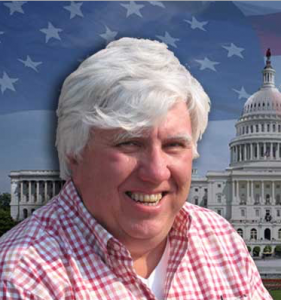The groundhog (Marmota monax), a.k.a. the woodchuck, is celebrated in folklore and cinema.
Each year on February 2 America’s most most famous groundhog, Punxsutawney Phil, becomes a weather prognosticator, delivering his annual prediction for the beginning of warm weather from Gobbler’s Knob, a hill outside of Punxsutawney, Pennsylvania, a small town 65 miles northeast of Pittsburgh.

Phil’s emergence from his den and weather prediction is the centerpiece of a huge civic festival with music and food.
According to tradition, if Phil sees his shadow and returns to his hole, he has predicted six more weeks of winter-like weather. If Phil does not see his shadow, he has predicted an “early spring.”
Punxsutawney’s civic event is the most famous of many Groundhog Day celebrations held in the United States and southern Canada. The event formally began in 1887, although its roots go back even further, and originated with the German-speaking Pennsylvania Dutch.
Across the country Groundhog Day is celebrated with informal gatherings in rural areas and suburbia, and bar hopping bus trips in urban areas.
After a few drinks someone is likely to utter this humorous tongue-twisting riddle which asks the question:
“How much wood could a woodchuck chuck, if a woodchuck could chuck wood?”
The answer is, of course: A woodchuck would chuck all the wood he could if a woodchuck could chuck wood.
Groundhog Day, the movie

Comedian Bill Murray, born in 1950 in Evanston, Illinois, starred in the 1993 fantasy comedy film Groundhog Day, which tells the story of a cynical television weatherman covering the annual Groundhog Day event in Punxsutawney, Pennsylvania, who becomes trapped in a time loop, forcing him to relive February 2 repeatedly.
Murray rose to national prominence on Saturday Night Live from 1977 to 1980, where he received a Primetime Emmy Award for Outstanding Writing for a Variety Series. He also acted in several comedy classics, including Meatballs, Caddyshack, Stripes and Ghostbusters.
Life history information
Here’s some descriptive information and details of a groundhog’s real life:
• Where high quality food is available, and few predators are present, groundhogs can grow more than 25 inches in length, weighing up to 30 pounds.
Groundhogs are well adapted for digging, with short, powerful limbs and curved, thick claws. Their tails are usually about one-fourth of their body length.
They have two coats of fur, a dense grey undercoat and a longer coat of banded guard hairs that give the distinctive “frosted” appearance.
• The groundhog’s tunnel digging prowess is extraordinary.
Researchers studying groundhog dens were amazed to discover some as long as 24 feet, extending about four feet deep, with the amount of soil dug out measuring more than eight bushels, weighing hundreds of pounds. This “recycling” ultimately benefits soil fertility.
While the groundhog’s digging behavior may be a hazard to livestock and farm equipment, it benefits other species of wildlife. Groundhog burrows, which extend below the frost line, are used by foxes, cottontail rabbits and other wildlife to escape severe winter cold and snow.

• The groundhog is a member of family Sciuridae, which includes tree squirrels, small ground squirrels, and large ground squirrels called marmots.
The yellow-bellied marmot and the hoary marmot live in rocky, mountainous areas, but groundhogs live in lowlands and are widely distributed throughout North America. They are common in the northeastern and central U.S., and Canada.
• The groundhog prefers open country, with burrow entrances usually located on the edges of woodlands.
Groundhogs use burrows for sleeping, rearing young, and hibernating, and they provide safety and a place to retreat during bad weather.
Several groundhogs may occupy the same burrow. Burrows usually have two to five entrances, providing groundhogs several escape routes.
Groundhogs are one of the few species that enter into true hibernation, and often excavate a separate “winter burrow.” This burrow is usually in a wooded or brushy area and is dug deep enough so that there’s a stable temperature well above freezing during the winter months. In most areas, groundhogs hibernate from October to late March or April, but in more temperate areas, they may hibernate for as little as three months.

To survive the winter, they gorge themselves in the fall, like a bear, to reach their maximum weight shortly before entering hibernation. They emerge from hibernation with some remaining body fat to live on until warming spring weather sprouts greening grasses and clovers.
Groundhogs are most active early in the morning or late in the afternoon.
• Groundhogs eat primarily wild grasses, and other green vegetation, also berries and agricultural crops, if available. Clover, alfalfa, dandelion, and coltsfoot, a wild flower in the daisy family, are among the groundhog’s favorite foods. They sometimes consume grubs, grasshoppers and snails, but not as often as squirrels.
• Groundhogs have a reproductive rate that compensates somewhat for their high mortality.
Usually groundhogs breed in their second year, with the breeding season starting in March or April, after hibernation.
A mated pair remains in the same den throughout the 30-day gestation period. One litter is produced annually, usually containing two to six kits, born blind and hairless. As the birth of the young approaches, the male leaves the den.
Groundhog mothers introduce their young to the world above ground once their fur has grown in and they can see. At this time, the male groundhog comes back to the family to help “train” their young. By the end of August, the family breaks up, and the young seek out new territories, usually nearby.
• Many rural landowners and farmers consider the woodchuck a varmint, so this native mammal is widely hunted. Groundhogs may damage farm crops, such as tender young corn or soy bean plants, and stands of forage (clover and alfalfa). In rural subdivisions, they sometimes chow out on garden vegetables and flowers, to the dismay of homeowners.
• The long-range weather forecast for central Kentucky is calling for temperatures near 50 degrees and cloudy skies on February 2nd.
Let’s hope that’s true, and Phil doesn’t see his shadow, so we’ll get an early start to spring, and put an end, once and for all, to the extreme cold and snow of January 2025.





















